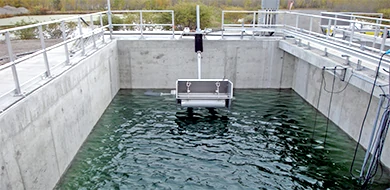
Sequencing batch reactors (SBR) are common method for the treatment of wastewater or sewage . Oxygen is bubbled into the collected wastewater into the SBR reactor to reduce biological oxygen demand (BOD) and chemical oxygen demand (COD) to make suitable for discharge into inland surface. SBR systems are upgrades of conventional activated sludge systems that minimize footprint by integrating separate functions in a single treatment system.
SBRs process wastewater in batches through single fill-and-draw tanks. Each tank operates under five commands of fill, react, settle, draw, and idle. Some treatment facilities may use two or more batch tanks in optimizing the effectiveness of their systems, depending on the expected volume of wastewater flow and treatment period. Influent water that passes through the SBR undergoes systematic grit removal screening processes before reaching the reactor tanks.
Technicians partially fill each batch reactor with biomass to facilitate the anaerobic processes involved in water treatment. The wastewater undergoes various processes from within batch reactors, including aeration, equalization, and primary and secondary clarification, through a time-controlled sequence.
Aeration is a crucial phase in wastewater systems, which involves adding oxygen to wastewater that feeds bacteria populations that stimulate the aerobic biodegradation of natural contaminants. Equalization or EQ is the process that balances the characteristics of wastewater, such as flow rates and p levels. The equalization processes reduce the errors and process adjustments required down-line in a treatment facility. Clarification processes eliminate the impurities from wastewater supplies to provide a clear appearance.